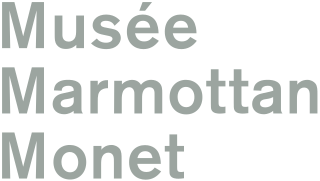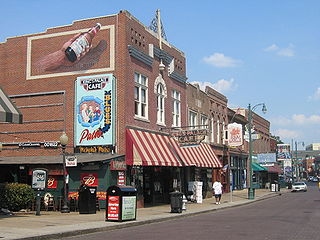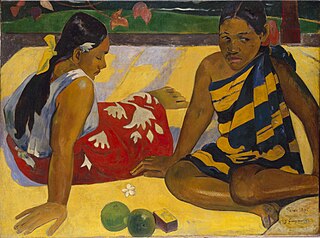
Oscar-Claude Monet was a French painter and founder of impressionist painting who is seen as a key precursor to modernism, especially in his attempts to paint nature as he perceived it. During his long career, he was the most consistent and prolific practitioner of impressionism's philosophy of expressing one's perceptions before nature, especially as applied to plein air (outdoor) landscape painting. The term "Impressionism" is derived from the title of his painting Impression, soleil levant, exhibited in 1874 initiated by Monet and his associates as an alternative to the Salon.

Impressionism was a 19th-century art movement characterized by relatively small, thin, yet visible brush strokes, open composition, emphasis on accurate depiction of light in its changing qualities, ordinary subject matter, unusual visual angles, and inclusion of movement as a crucial element of human perception and experience. Impressionism originated with a group of Paris-based artists whose independent exhibitions brought them to prominence during the 1870s and 1880s.

Pierre-Auguste Renoir was a French artist who was a leading painter in the development of the Impressionist style. As a celebrator of beauty and especially feminine sensuality, it has been said that "Renoir is the final representative of a tradition which runs directly from Rubens to Watteau."

Edgar Degas was a French Impressionist artist famous for his pastel drawings and oil paintings.

The Ny Carlsberg Glyptotek, commonly known simply as Glyptoteket, is an art museum in Copenhagen, Denmark. The collection represents the private art collection of Carl Jacobsen (1842–1914), the son of the founder of the Carlsberg Breweries.

Musée Marmottan Monet is an art museum in Paris, France, dedicated to artist Claude Monet. The collection features over three hundred Impressionist and Post-Impressionist paintings by Claude Monet, including his 1872 Impression, Sunrise. The museum's fame is the result of a donation in 1966 by Michel Monet, Claude's second son and only heir.

The Neue Pinakothek is an art museum in Munich, Germany. Its focus is European Art of the 18th and 19th centuries, and it is one of the most important museums of art of the nineteenth century in the world.
Events from the year 1886 in art.
Vickery, Atkins & Torrey was an interior design firm and art gallery in San Francisco, California, that helped introduce California to Impressionism. It opened in 1888 on Grant Avenue at Morton Street, where it was destroyed in the 1906 fire, and after a few years reopened at 550 Sutter Street, where it stayed in business until 1933.

Jean-Louis Forain was a French Impressionist painter and printmaker, working in media including oils, watercolour, pastel, etching and lithograph. Compared to many of his Impressionist colleagues, he was more successful during his lifetime, but his reputation is now much less exalted.

The Musée de l'Orangerie is an art gallery of impressionist and post-impressionist paintings located in the west corner of the Tuileries Garden next to the Place de la Concorde in Paris. The museum is most famous as the permanent home of eight large Water Lilies murals by Claude Monet, and also contains works by Paul Cézanne, Henri Matisse, Amedeo Modigliani, Pablo Picasso, Pierre-Auguste Renoir, Henri Rousseau, Alfred Sisley, Chaïm Soutine, Maurice Utrillo, and others.

Paul Durand-Ruel was a French art dealer associated with the Impressionists and the Barbizon School. Being the first to support artists such as Claude Monet, Camille Pissarro, and Pierre-Auguste Renoir, he is known for his innovations in modernizing art markets, and is generally considered to be the most important art dealer of the 19th century. An ambitious entrepreneur, Durand-Ruel cultivated international interest in French artists by establishing art galleries and exhibitions in London, New York, Berlin, Brussels, among other places. Additionally, he played a role in the decentralization of art markets in France, which prior to the mid-19th century was monopolized by the Salon system.

Memphis Brooks Museum of Art is an art museum in Memphis, Tennessee. The Brooks Museum, which was founded in 1916, is the oldest and largest art museum in the state of Tennessee. The museum is a privately funded nonprofit institution located in Overton Park in Midtown Memphis.

Tourism in Memphis includes the points of interest in Memphis, Tennessee such as museums, fine art galleries, and parks, as well as Graceland the Beale Street entertainment district, and sporting events.

The Galerie Neue Meister in Dresden, Germany, displays around 300 paintings from the 19th century until today, including works from Otto Dix, Edgar Degas, Vincent van Gogh and Claude Monet. The gallery also exhibits a number of sculptures from the Dresden Sculpture Collection from the same period. The museum's collection grew out of the Old Masters Gallery, for which contemporary works were increasingly purchased after 1843.

The M.T. Abraham Foundation is a non-profit cultural institution, which is part of the Israeli M.T. Abraham Group. Its headquarters are in Tel Aviv, Israel, and its part of the collection is on permanent display in Mostar. Its stated intent is to promote public appreciation of the most important styles of Modernism: Post-Impressionism, Fauvism, Cubism, Cubo-Futurism, Futurism, Constructivism and Suprematism by collecting pieces that can be loaned "for the sole purpose of display and study by public institutions," and to present most effectively the first half of the 20th century, a period that saw revolutionary tendencies shape the art scene.

Springtime or The Reader is an 1872 painting by the French Impressionist painter Claude Monet. It depicts his first wife, Camille Doncieux, seated reading beneath a canopy of lilacs. The painting is presently held by the Walters Art Museum.
Janice H. Levin (1913–2001) was an American businesswoman and philanthropist and art collector from New York City. She was a patron of the ballet and collected mostly French impressionist paintings. She was a supporter of higher education as well as charities in Israel. She donated many of her paintings to museums.

The Museum Barberini is an art museum in Potsdam opened in 2017. Its exhibitions range from the so-called Old Masters to contemporary art, with an emphasis on impressionist painting. Centered around works from the collection of its founder and patron Hasso Plattner, the Barberini presents three temporary exhibitions per year, featuring loans from international museums and private collections. Academic conferences serve to prepare these exhibitions. At the same time, shorter gallery displays – the so-called “art histories” – put works from the collection into constantly shifting contexts. The museum aims to offer a diverse programme of events and educational activities as well as digital offers like the Barberini App and the 4K Smart Wall in the museum.



























